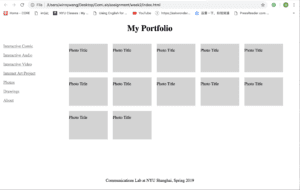Understanding Comicsby Scott McCloud reflects back on the root and definition of comics, it contributes to the debate of medium and its use. Although there are some of his arguments that I don’t fully agree, just like the narrative character in Understanding Comics makes a toast and says: “HERE’S TO THE GREAT DEBATE!” (23), I find the whole process of deeply thinking and exploring interesting and meaningful.
There are predominant situation-setting outside this conversation of comic definition. For example, onIntroductionold pal of the narrative character ironically jokes: “AREN’T YOU KIND OF YOUNG TO BE DOING THAT SORT OF THING?” Later on Page 3, the boy refers comics as “CRUDE, POORLY-DRAWN…” (3) There are more scenes like these, they all tell readers that comics and comics producers are facing negative problem of being labeled or put in a framework of (1) What comics should be like; (2) What comics producers should act. To have a clear analysis of the root of this way of thinking, Scott McCloud points the importance of defining comics. We shouldn’t focus on the styling or coloring; they are all surfaces of the question. It’s time to look at comics as a modern way of medium, and comics is way more complicated then we might think. We should stop viewing it simply as images or drawing in order to emphasize the uniqueness of comics which are not overlapped with other ways of medium.
One uniqueness I find is the relation between comics and people who read it, in order words, how comics is processed in people’s mind. For this issue, Scott McCloud created a funny scene where comics character “tell” the readers something but then “point out” there is actually no one “said” a word. (25) This leads to the issue of what is real and unreal, in this case of comics, it is often ignored by people that we readers are always using our imagination when reading comics. For example, we will treat an outlet as a human face (32). According to Scott McCloud, this is because “WE HUMANS ARE A SELF-CENTERED RACE” (32). Intentionally or not, humans imagine objects as one of their own, looking for the ultimate of overlapping between human and non-human. Furthermore, it creates a better way of connecting we and non-human, as an extension of human sense, awareness of self. Maybe one day (almost current), we need to rethink and explore the definition of human!
